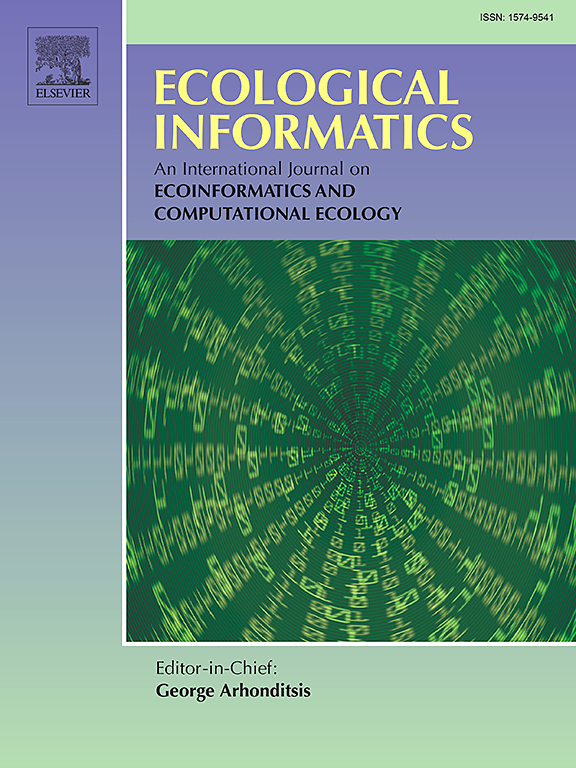Forest variables from LiDAR: Drone flight parameters impact the detection of tree stems and diameter estimates
IF 5.8
2区 环境科学与生态学
Q1 ECOLOGY
引用次数: 0
Abstract
Ecosystem services provided by central European forests, often dominated by Norway spruce or Scots pine, are increasingly threatened by climate change. Monitoring, while labour intensive, is key to ensure continuing forest health. Consequently, UAV-based LiDAR remote sensing has become a valuable tool. However, the impact of drone flight parameters on LiDAR data quality has not yet been extensively studied. To address this, we first present a methodology for delineating tree stems, estimating their diameter at breast height (DBH), and separating understory vegetation from stems and old-grown trees to subsequently compare the approach to other existing methods. Second, we analyse how drone flight parameters influence the accuracy of forest parameter detection. Our methodology outperformed existing approaches in stem detection and DBH estimation. Understory detection enabled the identification of forest paths, roads, and areas without understory vegetation. Differences in flight parameters had a large effect on the accuracy of the approach. Optimal data usability was achieved by flying the drone at low flight height above the trees, at relatively high speeds, and with high LiDAR stripe overlap, balancing detailed data collection with efficient area coverage. We conclude that the new approach can provide foresters with detailed insights into forest structure and dynamics, reducing the need for extensive fieldwork.

来自激光雷达的森林变量:无人机飞行参数影响树茎和直径估计的检测
通常以挪威云杉或苏格兰松为主的中欧森林所提供的生态系统服务正日益受到气候变化的威胁。监测虽然是劳动密集型工作,但却是确保森林持续健康的关键。因此,基于无人机的激光雷达遥感已成为一种有价值的工具。然而,无人机飞行参数对激光雷达数据质量的影响尚未得到广泛研究。为了解决这个问题,我们首先提出了一种方法来描绘树木的茎,估计其胸径(DBH),并将林下植被从茎和老树中分离出来,然后将该方法与其他现有方法进行比较。其次,分析了无人机飞行参数对森林参数检测精度的影响。我们的方法在干检测和DBH估计方面优于现有的方法。林下植被检测可以识别森林路径、道路和没有林下植被的地区。飞行参数的差异对接近的准确性有很大的影响。通过在树木上方以较低的飞行高度、相对较高的速度、高激光雷达条纹重叠、平衡详细数据收集与有效区域覆盖,实现了最佳数据可用性。我们的结论是,新方法可以为森林工作者提供对森林结构和动态的详细见解,减少了广泛的实地调查的需要。
本文章由计算机程序翻译,如有差异,请以英文原文为准。
求助全文
约1分钟内获得全文
求助全文
来源期刊

Ecological Informatics
环境科学-生态学
CiteScore
8.30
自引率
11.80%
发文量
346
审稿时长
46 days
期刊介绍:
The journal Ecological Informatics is devoted to the publication of high quality, peer-reviewed articles on all aspects of computational ecology, data science and biogeography. The scope of the journal takes into account the data-intensive nature of ecology, the growing capacity of information technology to access, harness and leverage complex data as well as the critical need for informing sustainable management in view of global environmental and climate change.
The nature of the journal is interdisciplinary at the crossover between ecology and informatics. It focuses on novel concepts and techniques for image- and genome-based monitoring and interpretation, sensor- and multimedia-based data acquisition, internet-based data archiving and sharing, data assimilation, modelling and prediction of ecological data.
 求助内容:
求助内容: 应助结果提醒方式:
应助结果提醒方式:


